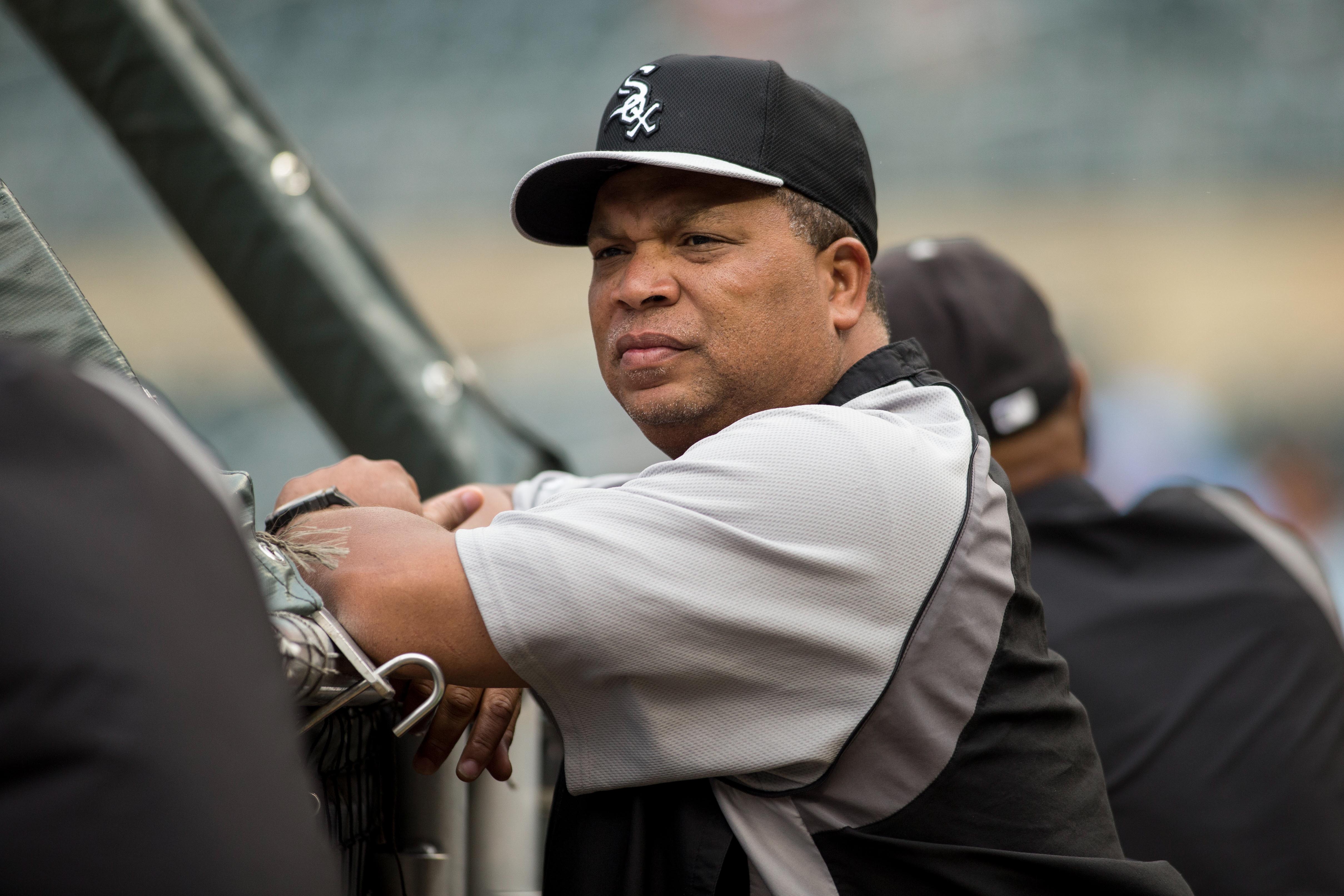GLENDALE, Ariz. — The White Sox have an opportunity, this year and throughout the next few, to flip the script in terms of how they’re viewed regarding player development.
The perception of the White Sox system for the past decade has been that it succeeds in developing pitchers and struggles in the same department with hitters.
This is a fair assessment. Since the mid-2000s when the White Sox brought along players like Joe Crede and Aaron Rowand, they have struggled to develop young hitting talent in the same fashion that they did with pitchers.
Rick Hahn & Co. hoped to change that perception when, after the 2013 season, they hired Todd Steverson as their new hitting coach. The goal, as Hahn expressed at the time, was to begin to develop hitters in a similar fashion to pitchers. That is to say, to focus on making sure the message delivered to hitters is consistent from the top to bottom of the organization.
“Really, you want the continuity to go from the top to the bottom,” Steverson said when asked about that process this week. “You need your player development to be right on queue with the things they’ll hear when they get to Chicago. We want the program to be with everyone in unison. I don’t want someone to hear one thing in one place and then go somewhere else and hear something different and have to switch or change too many things.”
That process, as expected, has been a slow burn. You don’t just flip the switch on an entire developmental strategy overnight. In particular with the White Sox, that process is even more difficult with a system as barren of hitters as it’s been in recent seasons.
But the White Sox have taken steps to improve that part of their organization, and with an infusion of talent that has seen the likes of Tim Anderson, and now Yoan Moncada, Zack Collins, and Luis Alexander Basabe added to the system, there’s more to work with this year than in any other year in recent history.
But for Steverson, while that infusion does provide lumps of clay with which to mold, the process takes time, particularly in a situation like the one the White Sox find themselves.
“You’d be a fool to just jump right in and tell them ‘this is what you need to do,’ ” Steverson said. “They’re here and they’re professionals for a reason. You have to see what they do first. So there’s a little period where you wait and see and watch what they do. One at-bat or one out or one non-result doesn’t mean that they need to change something.”
Mike Gellinger has been in the White Sox organization for 29 years. Like Richard Dotson, the recently promoted minor league pitching coordinator who had developed quite the reputation for his work with pitchers during his tenure, Gellinger has done the same with hitters. And also like Dotson, he was promoted to minor league hitting coordinator during the offseason.
Gellinger has worked with White Sox hitters for years, and when you ask him about the development of the young hitters in the White Sox system, he mentions a lot of the same things as Steverson — watching the players and developing a plan — he also mentions the specifics of what they try to teach once they get past the observation.
“We try not to be too complex with anything,” Gellinger said. “Basically, it’s about the position of the body, putting them in the right position, with good direction, and going from there.
“The goal is definitely to try to become more uniform in our offensive approach.”
And, for what it’s worth, the players seem to be buying in.
“They ask the hard questions about what’s going to help you out,” said Matt Davidson, a once-heralded prospect trying to make the team out of Spring Training for the first time since joining the organization prior to the 2014 season. “You think about those questions and are able to figure out how it helps you as a hitter.”
“They always try to help you,” said Yolmer Sanchez, who has been with the organization since 2009. “I’m looking to get their advice every day.”
“They’re there if I need them,” said Anderson, who probably stands out above any other as a beacon of the developmental changes. “Since I was drafted, they’ve been tremendous and I’ve taken big strides. It’s been a blessing to have guys like that in your corner.”
For as many strides as the White Sox hitting development has taken over the last few years, work is to be done. But the one thing the White Sox now have, as opposed to previous seasons, is time, as there’s no rush toward contention anymore. And if they continue to be patient with that process, the changes could pay dividends once these young players’ developments come to fruition.
“Whether you’re a young player or a seasoned veteran, I think that what we try to do is consistently go to your plan or your approach more than your result,” manager Rick Renteria said. “We know that the result at the end of the day will take care of itself based on how you go about your business.”
Lead Photo Credit: Bruce Kluckhohn-USA TODAY Sports

1 comment on “White Sox hitting development continues to develop”